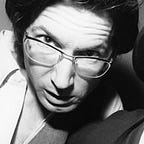How to create Digital Collectibles? | DigiArt Guide
If you are new to Non-Fungible Tokens (NFTs), this article will help explain some basics:
- How NFT art collections are made
- Where NFT artwork is stored
- What we mean by minting an NFT
Producing an NFT Art collection
So, what is involved in launching a Profile Picture (PFP) NFT Collection? Firstly, the artist must draw outlines of the key characters. These are taken into a graphics package and perfected. A variety of novel traits are overlaid over the basic characters next. This may include different backgrounds, facial features, clothes and accessories. Provided each new layer seamlessly overlays the last, we are good. So, what next?
Each new trait will be labelled, saved and recorded on a spreadsheet. How rare a trait becomes may also be decided now. The job of randomly mixing and matching traits to create the required number of characters is done with dedicated software. We now have sequentially numbered image files, each a unique character, in our artwork folder.
Artwork Storage
The artwork folder is uploaded to a decentralised peer-to-peer storage system like the Interplanetary File System (IPFS), or Arweave. This gives us a unique link to each original image file that will bring the artwork up on screen. Link and trait data for each character are now combined and we upload this metadata too
NFT as certificate of ownership
To be clear — when we mint an NFT, we are not uploading the artwork to the blockchain. We are creating a token on the blockchain which holds the link to the original artwork along with its descriptive metadata. Once on the blockchain, this token metadata can’t be meddled with and holding the related NFT token in your wallet will become your certificate of ownership of the artwork. As you own the private key to your own wallet, this puts you in charge. The ownership can only change with the transfer of the token from one wallet to another.
Minting an NFT
Now we are ready for our grand finale — the act of generating (ie. minting) an on-chain NFT for each piece of artwork. For this, we need a smart contract. This is a script on the blockchain which runs when called. The scripted code can be specific to an artwork collection, or it can be the contract that an NFT marketplace makes available to all its users.
Some minting services that work with NFT marketplaces offer ‘lazy minting’ as an option, so a token only gets minted when your artwork has a buyer. In this case the buyer covers the cost of minting the NFT, sparing the artist from an upfront cost. NFT marketplaces charge a commission for each sale (from 2.5% with OpenSea). Some also usefully provide the facility for the creator to set and receive royalties from future resales.
We’ve made it sound easy, but launching a new PFP NFT collection is a lot of work. DigiArt aims to support a series of artists with their NFT collection releases, helping to bring all these moving parts together. The first release will be the Haculla collection by fine artist Harif Guzman.
For the latest on what DigiArt has to offer, including the soon-to-be-released Haculla collection, join the DigiArt community on Discord. Look out also for Q&As and quizzes and register on our website for the chance to win a pair of tickets to Miami Art Week (flight and hotel included)!
About DigiArt
DigiArt provides an authentic art and community-centric team that connects collectors with true artists and creatives through online and face-to-face events, NFT artwork drops and new and unusual experiences.
